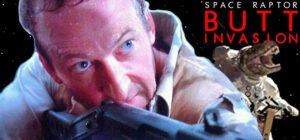 The classic 1977 Traveller ruleset includes a complicated and robust system for populating your alien worlds with a host of alien lifeforms. Mark Miller lays out the system for doing so in what at first appears as an ad-hoc organization, as was the style at the time. The problem that Mark faced – and its one that I don’t think enough people appreciate – was considerable. How do you build multiple ecosystems at the table in a way that is deep enough to maintain interest, mystery, and adventure without getting too bogged down in the details.
The classic 1977 Traveller ruleset includes a complicated and robust system for populating your alien worlds with a host of alien lifeforms. Mark Miller lays out the system for doing so in what at first appears as an ad-hoc organization, as was the style at the time. The problem that Mark faced – and its one that I don’t think enough people appreciate – was considerable. How do you build multiple ecosystems at the table in a way that is deep enough to maintain interest, mystery, and adventure without getting too bogged down in the details.
One of the reasons classic Traveller is such a classic is that Mark Miller solved that problem with elegance and grace. He starts with a basic classification system for the ecological niches based on how an animal feeds. Using these four major groups, Mark directs referees to build a ‘wandering monster’ table of sorts for each of the biomes of interest, and his table features three each of the herbivores and carnivores, plus two each of the omnivores and scavengers. This system makes perfect sense given that we’re talking about animals from an adventurer’s point of view – we need to know what it eats because what it eats might be your character!
To add more personality to the table, referees then roll to find out specifically what kind of eater they plug into the chart. The style of eating subdivides each of the major eater types. For example, herbivores are more likely to be grazers but could just as well be filter feeders. Carnivores are broken down by how they catch prey and could be ambush predators who pounce or trap, persistent hunters who run down their dinners, or even something more exotic like a siren who seduces prey using lures or mimicry.
With specific feeding habits and behavior laid out, referees turn to physical appearance. Size, wounds, weapons, and so forth are generated randomly and at long last you’ve got a clear picture of not just what the animal is, but where it fits into the food web – and by extension where it lies in that web in relation to the player characters.
Throw in a handful of tables to modify results based on biome – you find larger animals in the ocean than in the forest and more grazing animals in the plains than in a desert – and one last chance at odd features like flight or armor, and you’ve got yourself nearly unlimited possibilities. This can be done as prep work (boo!) or on the fly (yes!), and with a bit of thought you wind up with a bestiary for each biome on a planet that is both thorough and believable.
But what do you do with all of these creatures?
Whatever is needed at the time. If your ship is shot down and crashes on a TL2 planet, there’s plenty of protein out there for you to bring down and live on until help arrives. If your players have to make a delivery to the hinterlands of a dangerous planet and need an encounter to spice up the session, you can put the final shipment destination a few days drive away from the starport.
In my case, you run a safari hunt.
 With a need for a new adventuring party to fill up Chad Solo’s downtime, I turned to the hivemind with three possibilities. Naturally two of them, “RUN A SCOUT” and “JUNGLE HUNT” tied for first. So we conjure up a three term Scout (23D7B9, see pic above) who needs to prove himself by capturing an elusive animal on the acid-rain washed planet of Blaine’s World. Jeremy Powell, hires a guide, Sgt. Muldoon Apples (shown here), and a bit of muscle, Luke Feral, to take him out into the dangerous wilds where everything has a means of protecting itself from the noxious air and corrosive effects of the frequent squalls of slightly acidic rain. The plants have waxy coats, the animals shelter below them or burrow into the soft limestone cliffs, and everything has blood a shade too dark, the better to allow them to pass what for a human would be excess carbon dioxide to and from the cells of their bodies.
With a need for a new adventuring party to fill up Chad Solo’s downtime, I turned to the hivemind with three possibilities. Naturally two of them, “RUN A SCOUT” and “JUNGLE HUNT” tied for first. So we conjure up a three term Scout (23D7B9, see pic above) who needs to prove himself by capturing an elusive animal on the acid-rain washed planet of Blaine’s World. Jeremy Powell, hires a guide, Sgt. Muldoon Apples (shown here), and a bit of muscle, Luke Feral, to take him out into the dangerous wilds where everything has a means of protecting itself from the noxious air and corrosive effects of the frequent squalls of slightly acidic rain. The plants have waxy coats, the animals shelter below them or burrow into the soft limestone cliffs, and everything has blood a shade too dark, the better to allow them to pass what for a human would be excess carbon dioxide to and from the cells of their bodies.
Side note: Looking up the symptoms for hypercapnia to see what physical changes to a body would protect against excess CO2 in the blood is a thing that Traveller players do. It’s not a game for wimps.
But what about the hunt itself?
We roll up a random target and get “scavenger”, which we name the Wump-Snipe. A few more rolls indicates a small dogs sized creature that is skittish and moves about in packs. Unlike the big grazers, whose acid resistant skin makes for some fine personal protective gear, and the predators, whose fearsome appearance makes for excellent trophies, the humble scavengers have been neglected by all but a few scientific foundations. One of those foundations has requested a living specimen, and if possible a breeding pair.
With a guide (Land Navigation-2) and a genuine brawler with a whacking stick (Tracking-2), Jeremy has a good chance at a successful hunt despite being a bit on the weak and clumsy side himself. Here are the rules for the hunt.
- You’ve got to spend at least a day driving and hiking out from the city. This gets you into the wilderness sufficient to find your prey. Roll for encounters as normal that day and night.
- Starting on Day Two, roll for encounters as normal every day and every night. Any given encounter has a Task roll of being the creature you’re looking for. In our case, a furtive scavenger makes for a difficult target so we apply a -2DM, which is negated by the presence of our guide with a Tracking-2.
- Whether or not the animal encounter is your target, you have to play out the encounter as normal. You might get ambushed by a predator, or catch sight of your prey at a very long distance. Them’s the breaks.
- Some discretion is unavoidable. As your hunt goes on, you might find yourself far from home and need to break off to resupply. That might mean two to three days of travel without hunting just to get back to refit. Resting up for a second expedition will cost you a minimum of two days and possible as much as a week, depending on how long out you were.
In Jeremy’s hunt, the team caught sight of a small pack of Wump-Snipes on the first day. Mr. Feral failed his tracking check, forcing a roll on the random encounter table, which luckily enough turned up Wump-Snipes anyway!
The Wump-Snipes naturally ran, and with a +1 to initiative for their furtive nature, could move before the team could react. They were too far away for anyone but Mr. Apples to get off a shot, but the esteemed hunter bagged two of them before the rest of the pack scurried off to safety. The presented the opportunity for another bit of discretionary judgement. As the team was hunting carrion eaters, and had two bodies handy, they now had bait on hand. This added another 2+ to the Tracking roll, and the next random encounter (on a 6+ now) proved to be a larger pack of larger Wump-Snipes. This time, with a 1+ to their initiative roll for sitting in a blind, the team could pop off a few rounds before the targets knew what hit them.
Sgt. Apples held his fire, his rifle being no good in a close-up encounter, but the excitable Jeremy blew off a shell with his shotgun, turning three of the things into red mist. Luckily, Luke has the presence of mind to spring forth with his whacking stick and bludgeon one of the things unconscious. At about 30-pounds each, it didn’t take much. Confused by the noise and motion, the wump-snipes dithered in the shadows beneath the triple-canopy, allowing Mr. Feral a second whack at them, which he put to good use. Jeremy pops off another round as Muldoon shouts at him to lay off – they got what they came for.
The rest of the day was spent securing their captive carrion eaters in expandable cages, which proved a heavy burden and cost the team an extra day of travel before returning back to their jump-off point at the foot of the cliffs housing the city of Marriot. With both prizes presented triumphantly to the Galactic National Galactigraphic Society, Jeremy has earned his wings. He can know move about the subsector in his own Type-S scout ship, and with the solid teamwork displayed by Apples and Feral, he decides to take them along on his adventures.
And that’s how you run a solo safari using one of the best RPGs ever put to print.



A wilderness adventure without a TPK?????
Unsubscubscribed lol